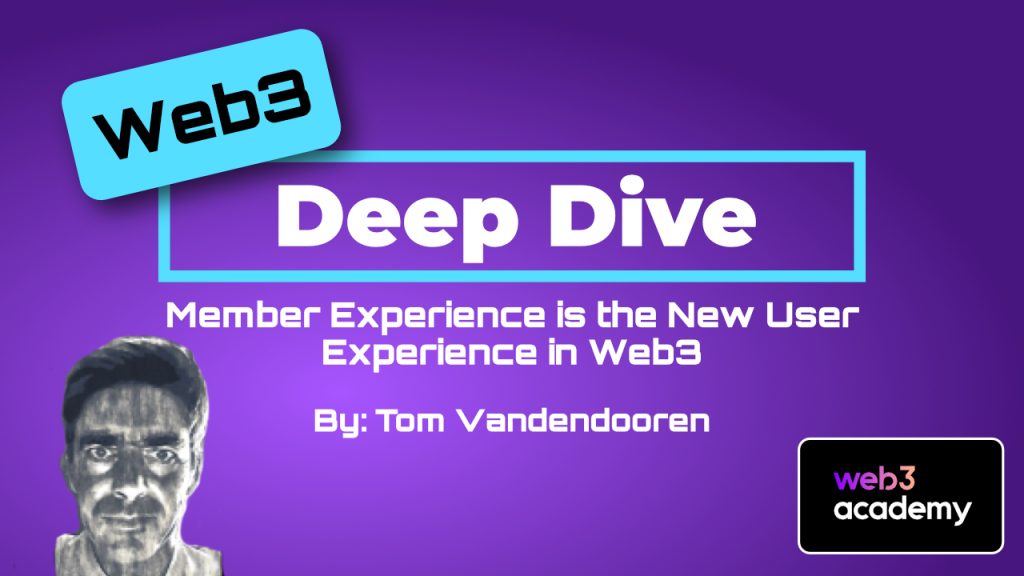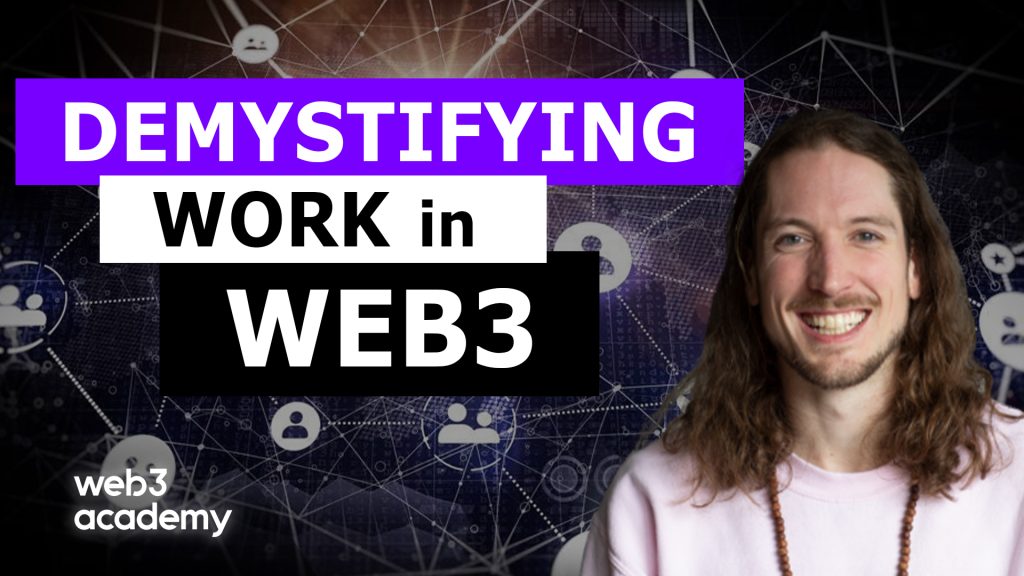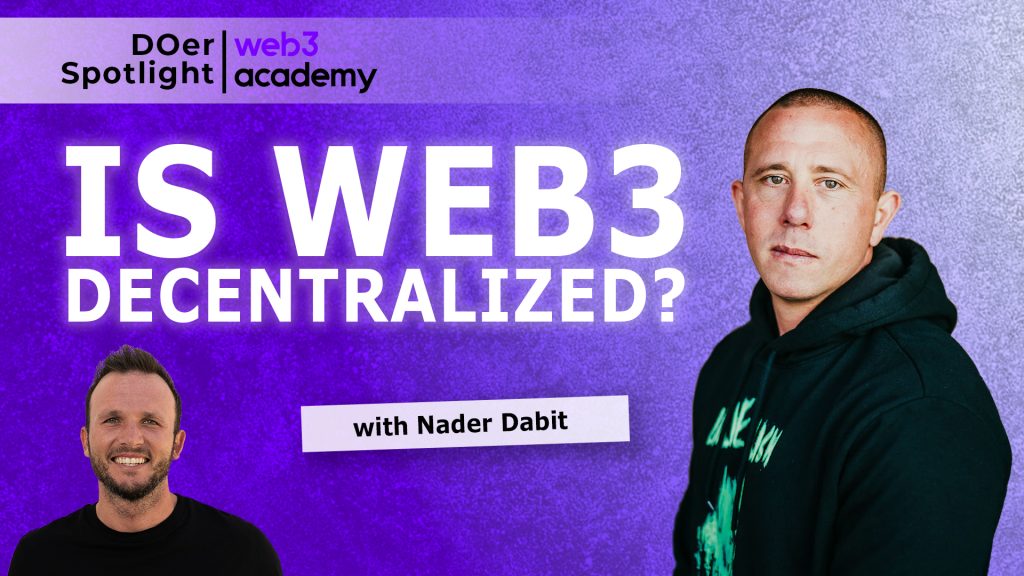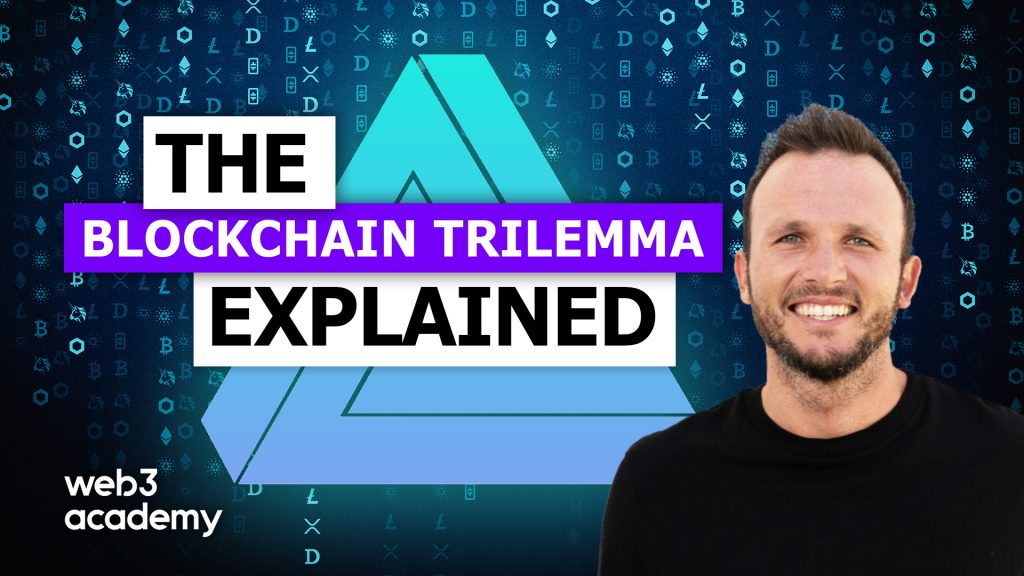
Member Experience is the New User Experience in Web3
Dear Web3 Academy DOers!
We believe that web3 isn’t ready for mass adoption due to the lack of high quality user experience (UX).
It’s an unpopular opinion, yes! Perhaps even controversial. It’s something nobody wants to hear.
And that’s why it is essential to speak about it. It is the only way any issue can be fixed.
This week, we have Tom Vandendooren‘s article which highlights the main web2 UX designs that need to be implemented in web3 in order to get it ready for mass adoption. Tom is a builder and coach for proposition design and go-to-market strategies in international, tech-driven and fast-moving industries.
Right now, the web3 space is built through the lens of developers and and crypto natives. So, unless you’re comfortable with blockchain and smart contracts, using web3 tools can be an intimidating and frustrating experience.
And that’s going to have to change. So, let’s talk about the essentials:
- What are the design fundamentals we should think about?
- What are the ways of building thriving communities?
- And what the hell is Member Experience (MX)?
Let’s get this space ready for mass adoption! Enjoy the article.
P.S: Have you considered working in Web3? It is the best way to contribute to the fastest growing industry on earth! Apply for a Web3 Job HERE!
Is your Web3 company looking to hire? We can help. Apply Here!
– Web3 Academy
If you prefer, you can watch the episode below, or listen on your favorite platform: Spotify | Apple Podcast | YouTube
The User Experience Problem
In terms of user experience (UX) web3 faces loads of basic access and usability challenges before it can cross the chasm to onboard the masses. Many of the early apps and services are built with a developer mindset, while the overall user experience is still fraught with friction and frustration.
Without wanting to state the obvious, web3 design needs to put the user at the center to deliver useful, usable and enjoyable user experiences.
Web3 starts from a high bar with an addressable user base that is well versed in tech and familiarized to the rich interfaces and convenience of web2 apps and services. As user expectations for digital services have steadily grown, people will get easily frustrated by confusing web3 journeys and slow speeds.
The good news is that UX has become a core priority within the web3 ecosystem, with many experienced and skilled web2 designers taking the plunge to fix the basics. At least this means there will be less tendency to reinvent the wheel but rather stick with familiar and tested design and UI paradigms.
Design Fundamentals That Improve UX
The list of design priorities to tackle is not a small one, however none of the below challenges are super complex and can be resolved with sound application of design fundamentals.
- USEFUL — what’s in it for me
Ensure users get what value your web3 app, service or community will add to their lives; emphasise benefits over features - ACCESSIBLE — ease of access and onboarding
Remove barriers to entry (e.g. don’t force wallet access) and create a welcoming and engaging onboarding experience; provide how-to tutorials - USABLE — ease of use and interaction
Trim down or avoid using web3 lingo and use familiar language and terms instead; hide the complexity of the blockchain back-end while being transparent about what data and transactions live on the blockchain - TRUSTWORTHY — clarity and fairness of terms and permissions
Take down the FUD (fear, uncertainty & doubt) and build trust through full transparency (data provenance, transactions, smart contracts, user permissions, …); treat data ownership and portability as a first-class citizen - ENJOYABLE — elegance and richness of user interface
Apply the rich UI design principles web2 users have grown to be accustomed to; provide and ask for the right amount of information at the right time - VALUABLE — effectiveness in delivering user value
Optimise for value creation, capture and distribution; recognise and reward user contributions; eliminate gas fees (by having the app/service absorb the costs, once scaling solutions have brought down the cost to much more manageable levels)
None of the above fundamentals are web3 specific, maybe with the exception of a higher emphasis on designing for trust and transparently aligning to the core web3 ethos, principles and implications of decentralisation, trustlessness, immutability, uncensorability and ownership.
However, as success for many of the web3 applications will rely on building and engaging a thriving community, I would argue that designing with the member in mind will elevate web3 design into its own field of expertise and excellence.
Focus On Member Experience (MX)
Optimising for member experience (MX) refocuses the design challenge on creating a shared digital space for people to do things together. Relational design aims to optimise for peer-to-peer connections and community co-creation, facilitating relational processes that collectively build and distribute agency.
It filters all UX fundamentals (usefulness, accessibility, usability, …) through a community lens and rewires traditional single-user incentives and 2-way relationships into many-to-many value creation dynamics.
It starts with understanding members’ motives and mapping their experience and touchpoints on a member journey map. Members’ motives for joining communities are often driven both by a sense of self-interest and a desire for connecting with like-minded individuals.
Most vibrant communities will be those that optimize on both axes: allowing members to self-identify and indulge in a range of member only benefits and perks, while creating a space for like-minded fans to socialize and co-create.
P.S: Would you like to join a community of fellow entrepreneurs, marketers and creators? Apply to join the Web3 Academy Discord!
When designing for member experience and creating the member journey map, it’s important to consider both the ‘me’ and ‘we’ perspective of any member interacting with your community. A member journey map is a visual representation of every experience members will have with a particular web3 community. It helps to tell the story of a member’s experience with the community from initial onboarding through to long-term commitment.
The 3-Stage Funnel
You can think of a community membership journey as a 3-stage funnel that takes a potential member from the community discovery stage to sustained positive-sum participation. In building this funnel, web3 designers and community builders should aim to optimise for the following:
- Community discovery & onboarding
Top-of-funnel awareness to attract potential community members & contributors; member onboarding with focus on shared expectation setting and initial relationship building - Member activation & contributions
Creating ways for people to get involved meaningfully; surfacing roles, projects and opportunities for members to contribute; creating positive feedback cycles (social recognition & reputation, monetary token rewards) - Community ownership & governance
Empowering members to have a real impact on the future direction of the community; facilitating proposal staging and voting
In mapping the member journey across these stages, it’s recommended to first optimize for contributor or creator member personas. Communities thrive because of their contributors. In order to build your initial ‘minimum viable community’, focus your efforts selectively on those who want to get involved meaningfully and are likely to be your early adopters.
Identify and engage individuals who will be top contributors and super fans, those that share your community’s vision and buy in to your purpose. By attracting primarily intrinsically motivated community members (aligned to the community’s ethos and mission) as opposed to purely extrinsically motivated participants (driven by external incentives, financial gain or short-term self-gain), you will be able to use this core team to build and validate your ‘minimum viable community’ and gradually grow your community by ‘weaving from the inside out’.
Think of this like an ambassador program where your early adopters will become de facto community leaders by modelling the behavior you want in the community.
People only contribute to communities if they trust that their time and energy are going to be put to good use. Trust starts with mutuality and builds with agency.
Mutuality means members will need to trust that the intentions behind the community are earnest and that other members in the community share the same values as they do. Agency and positive feedback cycles will build trust that member contributions are going to be put to good use and that the community is capable of making progress on and achieving its goals.
Unique Community Members
In designing for member experience (MX) it’s also important to not treat all members equally. Beyond the core team and active contributors, there is likely to be a majority of more passive members as well. Even if their role is lighter and less persistent, it’s important to think about minimum requirements or expectations any community member would need to live up to in order to ensure good cohesion and vibrancy. Different levels of participation and commitment require different member engagement, feedback and reward mechanisms.
That means MX design will ultimately result in a layered experience, with a mix of one-to-one personalised engagement, collective open-to-all community interaction, and a range of more topical channels, discussion forums and project groups. And with some of these spaces only accessible to select members, gating access based on member profiles, roles, reputation and/or wallets.
Identity And Reputation
Member identity and reputation will need to be architected with this multi-layered experience in mind. Identity is how we view ourselves, reputation is how others view us. Most web3 apps and communities work with pseudonymous identities, allowing members to identify themselves with a virtual (and often community-specific) profile.
Some communities rely on NFTs as a unique profile identifier (PFP or Profile Picture communities); some allow members to transfer their identity and PFP over from other communities. However and more importantly, identity design should allow members to reflect relevant skills, verifiable credentials, affinities and relationships to facilitate peer-level member interactions and drive collective agency. All this, without compromising member privacy and control over what data they share.
Beyond identity, designing an effective community reputation model will be critical. Reputation incentives and feedback loops are crucial to the growth, success and sustainability of any web3 project or community.
Reputation systems enable communities to recognize and reward members’ contributions, including content creation, moderation, community building, and specific project work. They provide the foundation for social signaling and proof-of-skin to enable (and gamify) a community-specific status play. The earned reputation should be non-transferable and non-permanent, but can be linked to fungible and redeemable rewards.
Community Management
Delivering a layered experience, based on a member’s identity and reputation, implies that the role of community managers will become more important than ever. They will be the driver of community engagement, moderation and activation, while at the same time being a role model reflecting and embodying the community’s norms, values and desired behavioural traits. In addition to facilitating member-to-member relationship building and interaction, community managers need to proactively activate the member and community feedback loop to create a sense of collective governance and co-ownership.

All this means that back-end community management tools will be equally crucial to member-facing features in optimizing for the overall member experience (MX). Obviously member profiling, access and permission management, reputation and reward systems, will all need to be catered for.
Tools for member onboarding and relationship management, as well as all-member notifications and sub-group communications will be essential to activate and sustain the community flywheel. And content moderation tools will help curate and filter valuable member contributions.
Tokenization adds even more requirements to the community manager’s toolbox, from token creation and distribution, to tokenomics and treasury management. Finally, KPIs and analytics (member, content, tokenomics, …) will need to provide crucial insights into a community’s overall health, effectiveness and vibrancy.
In managing a community and optimizing for individual and collective member experience, predictability and repeatability will be key. “Repeatability creates rhythm; rhythm creates traction; traction leads to flywheels; flywheels lead to growth”. Great communities thrive on repeatability: a rhythm that feels natural, rituals that happen regularly, consistent and recurring formats, a culture and values that are embodied.
Conclusion
There is still a lot of the basics to fix regarding overall web3 user experience (UX). But it’s by focusing on member experience (MX) design and applying a many-to-many lens that web3 apps and communities will create a repeatable flywheel and forceable muscle to deliver on the promise of web3’s ownership economy.
I’m not a design expert, but welcome the UX and design ecosystem to start thinking about the unique challenges and opportunities of designing for web3 experiences by combining the best of web2 with the distinctive community and membership aspects of web3.
Tom Vandendooren
Tom’s Twitter
Attend our Web3 Community Podcast Discussion
Every Monday, we host a community call on our Discord. This week, we’re talking about the power of community and why it is the new moat for businesses in Web3.
You’re more than welcome to join fellow entrepreneurs, marketers and creators in this discussion.
7pm EST In Our Discord!
Let’s learn together!
Join our DiscordWant Your Writing Featured in Web3 Academy?
Interested in publishing your article in Web3 Academy’s newsletter which goes out to a passionate community of Web3 builders, creators, marketers, and entrepreneurs? You can!
We want to share content from our community and get you in front of our broader audience. Here’s our guidelines to submit:
- It must be original work
- It must be related to Web3 and useful for entrepreneurs, creators and/or marketers
- It cannot be shill or promotion








